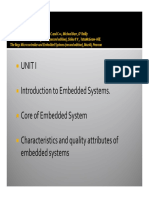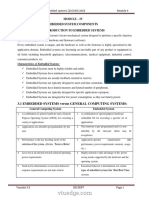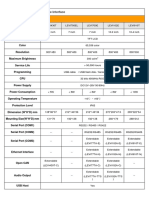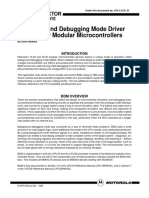0% found this document useful (0 votes)
4 views14 pagesModule-4 Notes Besck204c
The document provides an overview of embedded systems, detailing their definition, components, classifications, and applications across various fields. It contrasts embedded systems with general computing systems, highlighting differences in hardware, software, and operational characteristics. Additionally, it discusses sensors, interfacing, control systems, and transducers, emphasizing the importance of embedded systems in modern technology.
Uploaded by
lolxd56890Copyright
© © All Rights Reserved
We take content rights seriously. If you suspect this is your content, claim it here.
Available Formats
Download as PDF, TXT or read online on Scribd
0% found this document useful (0 votes)
4 views14 pagesModule-4 Notes Besck204c
The document provides an overview of embedded systems, detailing their definition, components, classifications, and applications across various fields. It contrasts embedded systems with general computing systems, highlighting differences in hardware, software, and operational characteristics. Additionally, it discusses sensors, interfacing, control systems, and transducers, emphasizing the importance of embedded systems in modern technology.
Uploaded by
lolxd56890Copyright
© © All Rights Reserved
We take content rights seriously. If you suspect this is your content, claim it here.
Available Formats
Download as PDF, TXT or read online on Scribd
/ 14























































































